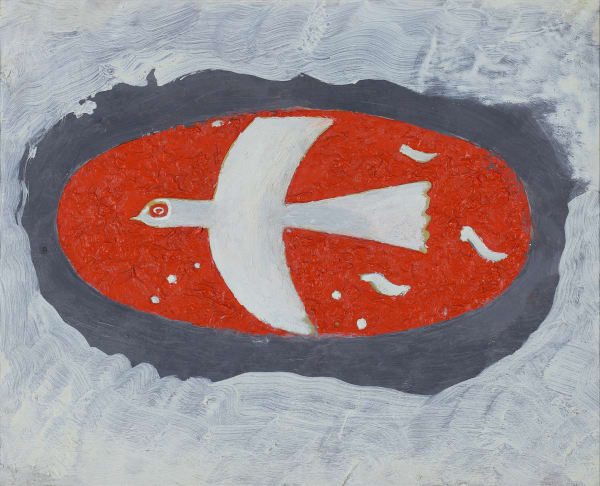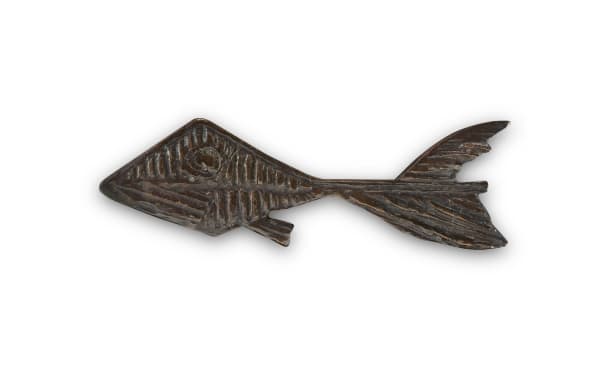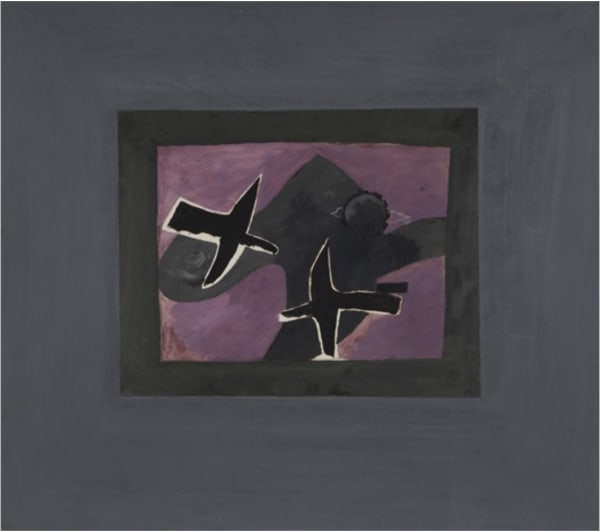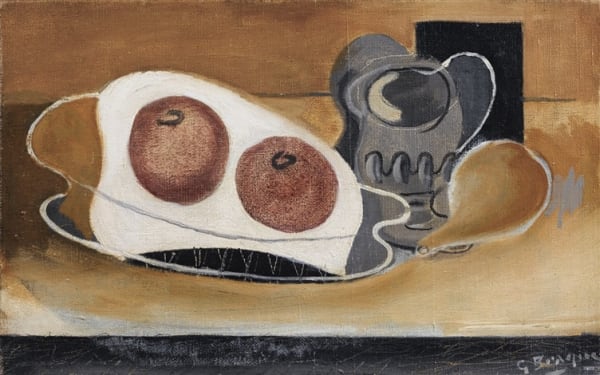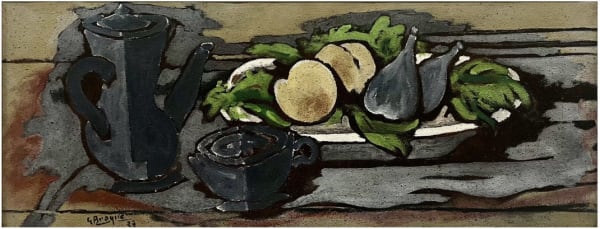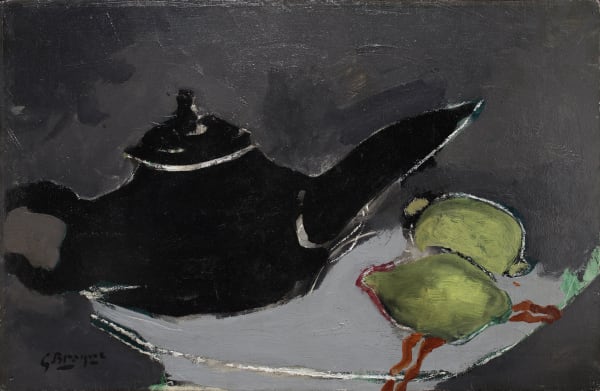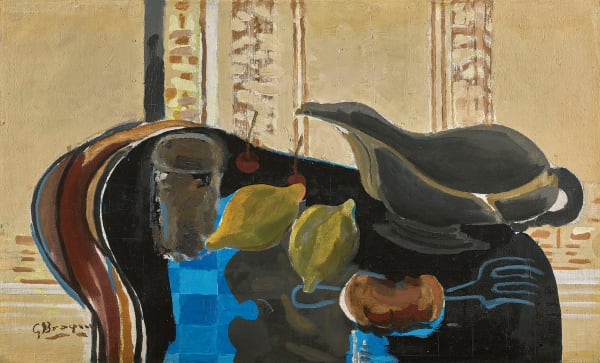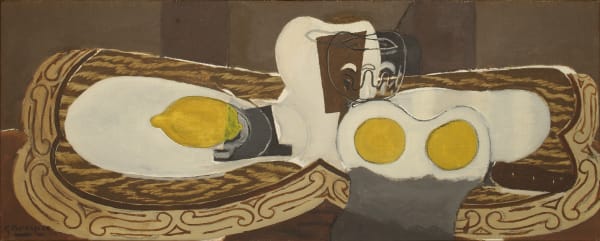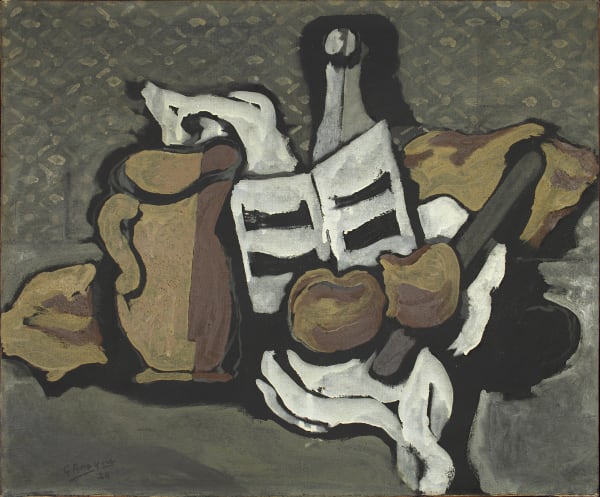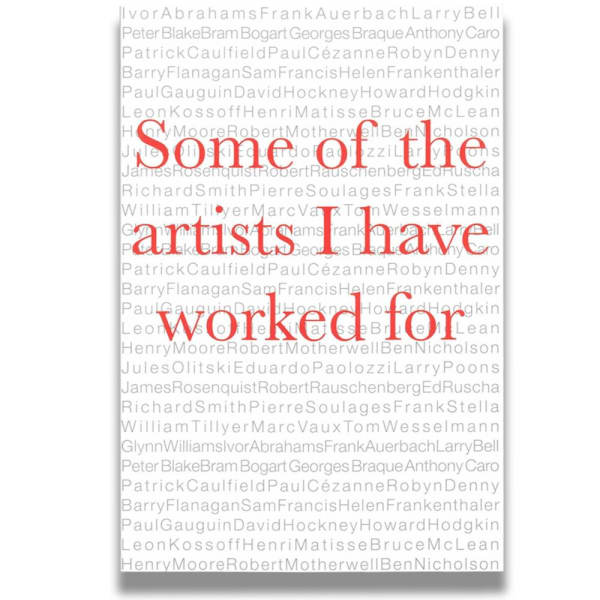Georges Braque
-
Overview
Georges Braque, born in Argenteuil, France, in 1882, was a pivotal figure in the development of modern art. Initially trained in the family business of painting and decorating, Braque soon immersed himself in the evolving avant-garde movements of the early 20th century. His initial works were influenced by Impressionism, but by 1905 he had established a position within the Fauvist movement. Known for its bold use of colour, Fauvism was a short-lived but significant phase in Braque’s career, one that he soon rejected for its reliance on colour in favour of a more structured approach to form and composition.
In 1907, Braque began to collaborate with Pablo Picasso, and together they co-founded Cubism, one of the most revolutionary movements in the history of Western art. Cubism was a radical departure from traditional representation, eschewing the linear perspective and illusionistic space that had dominated European painting since the Renaissance. Instead, Braque and Picasso fragmented objects into geometric shapes and presented them from multiple viewpoints simultaneously, challenging the viewer’s perception of space, form, and reality.
Braque’s contribution to Cubism extended beyond the theoretical framework established by Picasso. His use of collage and papier collé, where everyday materials such as newspaper clippings and textured papers were incorporated into the painting, further expanded the vocabulary of Cubist experimentation.
In his later years, Braque moved away from the strict formalism of early Cubism, exploring abstraction and texture through subdued palettes and intricate surface treatments. Despite this evolution, the essential principles of Cubism—particularly the exploration of space and the disintegration of form—remained a consistent thread in Braque's oeuvre. His work remains foundational to the development of modernist painting, with lasting influence on successive generations of artists.
-
Biography
1882 Born in Argenteuil, France, near Paris
1897 Apprenticed as a house painter and decorator with his father
1900 Studied at the École des Beaux-Arts in Le Havre
1902 Moved to Paris, studied at the Académie Humbert
1905 Fauve period, influenced by Henri Matisse and André Derain, painting with bright, bold colors
1907 First met Pablo Picasso; saw Picasso's "Les Demoiselles d'Avignon," which profoundly influenced his artistic direction
1908 Co-developed Cubism with Picasso during their intense collaboration, creating Analytic Cubism. Braque famously said they were "roped together like mountaineers"
1909 Painted "Violin and Candlestick," one of his key early Cubist works
1912 Developed Synthetic Cubism, introducing collage and papier collé techniques
1914 Served in World War I, was wounded and hospitalized
1917 Resumed painting after the war
1963 Died in Paris at age 81
SELECTED EXHIBTIONS
Early Museum Recognition: 1949 Georges Braque (retrospective), Museum of Modern Art, New York
1953 Venice Biennale, Venice (awarded Grand Prize for painting)
1956 Georges Braque (retrospective), Tate Gallery, London
1961 Georges Braque (first living artist honored), Louvre Museum, Paris
1964 Memorial exhibition, Louvre Museum, Paris
1982 Georges Braque: Centenary Exhibition, Centre Georges Pompidou, Paris
1982 Braque (celebrating 100th anniversary of his birth), National Gallery of Art, Washington D.C.
1988 The Essential Cubism: Braque, Picasso & Their Friends, various museums (touring exhibition)
1997 Braque: The Late Works, Royal Academy of Arts, London
2013-2014 Georges Braque: A Retrospective, Grand Palais, Paris (premiered there), then Museum of Fine Arts, Houston Georges Braque
2014 Georges Braque, Guggenheim Museum Bilbao (June 13 - September 21, 2014)
2019 Some of the artsits I have worked for, Bernard Jacobson Gallery, London
2019 Prints I Wish I had Published, Bernard Jacobson Gallery, London
2020 Braque: The Sacred and the Profane, Palazzo Strozzi, Florence
2021-2022 Georges Braque: The Poetry of Things, Bernard Jacobson Gallery, London
-
Works
-
 Georges BraqueOiseau, c. 1960Oil on paper
Georges BraqueOiseau, c. 1960Oil on paper -
 Georges BraqueLe petit poisson, c. 1952Bronze
Georges BraqueLe petit poisson, c. 1952Bronze -
 Georges BraqueL'oiseau et son ombre III, 1961Etching with aquatint in colours, on BFK Rives wove paper
Georges BraqueL'oiseau et son ombre III, 1961Etching with aquatint in colours, on BFK Rives wove paper
-
 Georges BraqueLes deux oiseaux, 1956Gouache on paper mounted on board
Georges BraqueLes deux oiseaux, 1956Gouache on paper mounted on board -
 Georges BraqueNature morte à la poire et aux, 1935Oil on canvas
Georges BraqueNature morte à la poire et aux, 1935Oil on canvas -
 Georges BraqueCafetière, tasse, plat de fruits, 1927Oil on canvas
Georges BraqueCafetière, tasse, plat de fruits, 1927Oil on canvas -
 Georges BraqueNature morte aux raisins (Le compotier), 1918Oil on canvas
Georges BraqueNature morte aux raisins (Le compotier), 1918Oil on canvas
-
 Georges BraqueL'Oiseau volant vers son nid, 1955Collage with gouache and pencil on the cover of 'Jaarboek' (1953)
Georges BraqueL'Oiseau volant vers son nid, 1955Collage with gouache and pencil on the cover of 'Jaarboek' (1953) -
 Georges BraqueThéière noire et deux citrons, 1948Oil on panel
Georges BraqueThéière noire et deux citrons, 1948Oil on panel -
 Georges BraqueLa saucière, 1942Oil on canvas
Georges BraqueLa saucière, 1942Oil on canvas -
 Georges BraqueLes sterlitzies (Oiseaux de paradis), 1941Oil on canvas
Georges BraqueLes sterlitzies (Oiseaux de paradis), 1941Oil on canvas -
 Georges BraqueNature morte avec citron et verre, 1941Oil on canvas
Georges BraqueNature morte avec citron et verre, 1941Oil on canvas -
 Georges BraquePomme, verre et serviette, 1927Oil on canvas
Georges BraquePomme, verre et serviette, 1927Oil on canvas -
 Georges BraqueNature morte: prunes, 1925Oil and sand on canvas
Georges BraqueNature morte: prunes, 1925Oil and sand on canvas -
 Georges BraqueCruche, cahier de musique, bouteille, 1924Oil and sand on canvas
Georges BraqueCruche, cahier de musique, bouteille, 1924Oil and sand on canvas
-
-
Exhibitions
-

Object / Subject: The Art of Still Life
7 July - 26 August 2022Bernard Jacobson Gallery is pleased to present a selection of still lifes by Georges Braque, William Tillyer, Bruce McLean, Matthew Smith, and Tom Wesselmann, among others. -

Georges Braque: The Poetry of Things
4 November 2021 - 27 January 2022Bernard Jacobson Gallery presents the first solo exhibition of Georges Braque in London since Braque: The Late Works at the Royal Academy, nearly 25 years ago. The exhibition brings together... -

Prints I wish I had published
11 January - 9 February 2019In 1969 Bernard Jacobson opened his first London gallery – a fourth-floor walk-up on Mount Street, Mayfair, dealing in prints by international stars, including Andy Warhol and Claes Oldenburg, as... -

Some of the artists I have worked for
10 September - 5 October 2019To end the celebrations of the 50th anniversary of the gallery, we are delighted to introduce a selection of works by the artists that helped shaping its success.
-
-
Art Fairs
-
Publications


